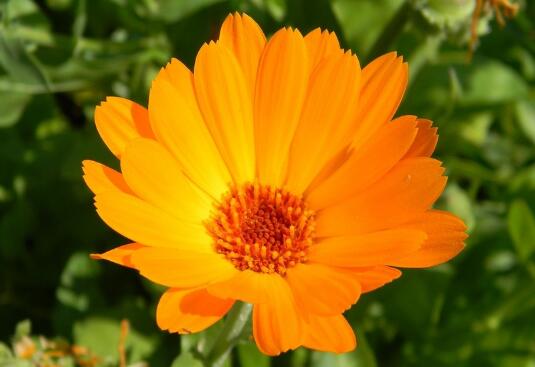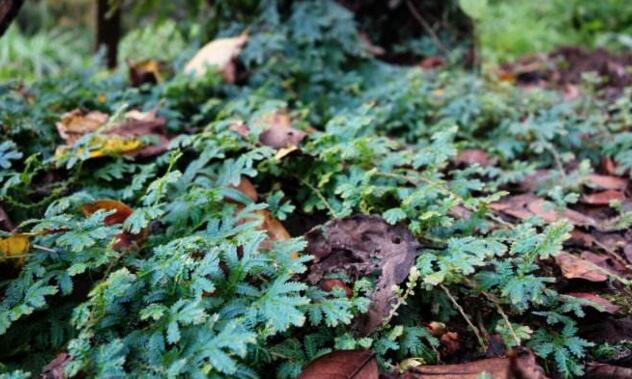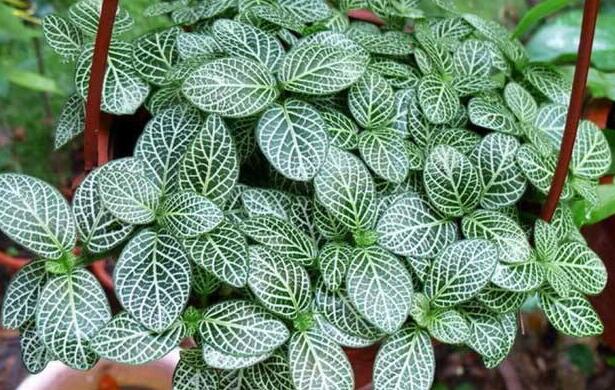How to raise calendula, how to cultivate marigold and matters needing attention / applying thin fertilizer / avoiding strong light
Calendula is a highly ornamental flower plant, which can be seen in many parts of our country, but if you want to raise this plant well, there are many places that need to pay attention to, so how to raise calendula? What are the breeding methods and matters needing attention of Calendula? Next, the editor will take you to learn about it.
First, how to raise marigolds and understand their habits

If you want to know how to raise calendula, we must first understand its growth habits. It is a kind of plant that likes light, and it likes slightly acidic soil and is more hardy, but it is more afraid of hot weather, so it is necessary to keep shade in summer.
II. Culture methods and matters needing attention of Calendula
1. Soil selection, slightly acidic
In the process of cultivating marigold, it is very important to choose soil, which is a step to lay a good foundation. Calendula prefers slightly acidic humus soil, which has good drainage and air permeability, which can better absorb nutrients and grow more healthily.
Note: although marigold prefers slightly acidic soil, it should not be too acidic, otherwise it will affect its growth, so you need to pay attention to this.
two。 Fertilizer requirement, thin fertilizer application
In the process of growing, calendula still has a great demand for fertilizer, especially after entering the growing period, it needs to be fertilized almost every half a month. If the fertilization is too little, it will affect the number of flowers. The size of the flower will also become smaller, and in serious cases, it may even cause it not to blossom.
Note: when we fertilize the marigold, we should pay attention to the fertilizer needs to be diluted with water first and then applied, so that it can be better absorbed. If the heavy fertilizer is applied directly, it is easy to burn the plant, thus causing the leaves of the plant to turn yellow and dry.
3. Lighting requirements, pay attention to shade in summer
Calendula is a kind of light-loving plant, if the light is more suitable in spring and autumn, we can keep it outdoors and let it receive light all day, but it is more afraid of hot weather, so it still needs shade after entering summer.
Note: summer is the hottest season of the year, so it is best to keep the marigold in the semi-shade indoors at this time, and the environment should be ventilated to prevent it from growing in high temperatures.
4. Humidity requirements, 75-85%
Calendula likes to grow in a high humidity environment, and it is best to control the ambient humidity between 75-85% during the growing period. We can keep the humidity by spraying water to the plant, usually once or twice a day.
Note: we do not need to spray water on cloudy and rainy days, otherwise there may be some bacterial infections due to high humidity, resulting in some adverse reactions in plants, so we have to manage environmental humidity according to the weather.
5. Regular pruning, once every two months
In the growth process of calendula, we also need to prune some dead branches and yellow leaves regularly, which can not only maintain the plant type, but also promote branching, thus making the plant grow to burst. We can limit the pruning time to once every two months.
Note: before pruning the marigold, it is best to disinfect the pruning tools so as not to infect the plant with bacteria.
6. Pest control, timely treatment, do not procrastinate
In the growth process of calendula, if we do not maintain properly, it is easy to appear some bad phenomena such as diseases and insect pests, which do great harm to the plant, not only affect its ornamental, but also cause the plant to dry up and die.
Prevention and control methods: when there are diseases and insect pests and other problems, we must deal with them in time, if the time is prolonged, the damage to the plant will be great, and it will be more troublesome to deal with it. You can refer to the article on the prevention and control of diseases and insect pests of calendula. Here, the editor will not introduce too much.
How to raise calendula? Culture methods and matters needing attention of Calendula
Calendula, also known as golden calendula, sober flower, everlasting chrysanthemum and so on, is an annual herb of the genus Calendula in Compositae. The flowers of calendula are colorful and have high ornamental value, so they are often planted in the indoor courtyard. At the same time, marigold is very popular because it has the effects of improving appetite and lowering blood pressure. So, how to raise calendula? Now the marigold culture methods and matters needing attention are introduced as follows.
Picture: calendula
I. Culture methods of Calendula
1. Spring, summer and autumn shading: calendula can not be exposed to strong light, spring, summer and autumn need to be shaded in time, if the temperature during the day exceeds 25 ℃, do not directly put in the sun, otherwise the leaves will obviously become smaller, the distance between the branches will be reduced, the leaves at the bottom will gradually turn yellow and fall off, and the growth of the plant will gradually slow down and even infiltrate semi-dormant state. In winter, because the temperature is not high, it can give direct light and promote photosynthesis, which is conducive to the formation of flower buds, flowering and fruiting of calendula. After the plant blossoms, the plant can be maintained indoors for 10 to 15 days, and then moved to the outdoor shade environment for one month, so alternate maintenance is conducive to the accumulation of plant nutrients and prolong the flowering period.
two。 To warm, avoid extreme heat: calendula likes warm climate, afraid of extreme heat, summer temperature higher than 34 ℃ will be poor growth; not resistant to frost, winter temperature below 4 ℃ will enter dormancy or even death. The most suitable growth temperature of marigold is 15-25 ℃. In the maintenance of the whole year, attention should be paid to the control of temperature, timely opening of windows and cooling by spraying water to control the indoor temperature.
Picture: calendula
3. Pruning: cut off the branches with old and yellow leaves every two months, as long as the temperature is right, it can blossom all the year round. Coring is usually carried out twice before flowering to promote the germination of more flowering branches: one to two weeks after potting, or when the seedling is 6-10 cm tall and has more than six leaves, remove the tip and retain the lower 3-4 leaves to promote branching. After 3-5 weeks of the first coring, or when the lateral branch grows to 6-8 cm long, the second coring is performed, that is, the top tip of the lateral branch is removed and the 4 leaves under the lateral branch are retained. After two coring, the plant type will be more ideal and the number of flowering will be more.
4. Control humidity, spray water in time: calendula likes humid environment, control humidity at 75-85%, spray water in time to increase humidity during maintenance, 1-3 times a day, high temperature in sunny days, appropriately increase the number of water spraying, lower temperature in cloudy and rainy days and reduce water spraying times appropriately. But excessive spray, heading is easy to be infected by bacteria and rot, so spray should also pay attention to the water quality.
Picture: calendula
Matters needing attention in marigold culture
1. Pay attention to water control: do not water too much during the growth period, just keep the soil moist. Spray in time when the temperature is high, increase air humidity.
two。 Pest control: the common diseases and insect pests of calendula are Fusarium wilt and downy mildew. Spray Dysen zinc wettable powder 500 times in time. When the temperature rises gradually in early summer, leaf spot disease often occurs in calendula. 2000 times of Weiruling wettable powder is sprayed to prevent and cure it.
[editor's conclusion] Calendula likes sunny environment and grows well in sunny and fertile areas, which should be paid attention to in the process of planting. The above introduced the marigold culture methods and matters needing attention, have you all learned?
Culture methods and matters needing attention of Calendula
Culture method of Calendula
Shading in spring, summer and autumn
Calendula can not be exposed to strong light, spring, summer and autumn need to be shaded in time, if the temperature during the day exceeds 25 ℃, do not put directly in the sun, otherwise the leaves will obviously become smaller, the distance between the branches will shrink, the leaves at the bottom will gradually turn yellow and fall off, and the growth of the plant will gradually slow down and even infiltrate the semi-dormant state.
In winter, because the temperature is not high, it can give direct light and promote photosynthesis, which is conducive to the formation of flower buds, flowering and fruiting of calendula.
After the plant blossoms, the plant can be maintained indoors for 10 to 15 days, and then moved to the outdoor shade environment for one month, so alternate maintenance is conducive to the accumulation of plant nutrients and prolong the flowering period.
Keep warm and avoid extreme heat
Calendula likes warm climate and is afraid of extreme heat. If the summer temperature is higher than 34 ℃, it will grow poorly.
Not resistant to frost and cold, the winter temperature below 4 ℃ will enter dormancy or even death.
The most suitable growth temperature of marigold is 15-25 ℃. In the maintenance of the whole year, attention should be paid to the control of temperature, timely opening of windows and cooling by spraying water to control the indoor temperature.
Pick the heart and trim
Cut off the branches with old and yellow leaves every two months, as long as the temperature is right, it can blossom all the year round.
Coring is usually carried out twice before flowering to promote the germination of more flowering branches: one to two weeks after potting, or when the seedling is 6-10 cm tall and has more than six leaves, remove the tip and retain the lower 3-4 leaves to promote branching. After 3-5 weeks of the first coring, or when the lateral branch grows to 6-8 cm long, the second coring is performed, that is, the top tip of the lateral branch is removed and the 4 leaves under the lateral branch are retained. After two coring, the plant type will be more ideal and the number of flowering will be more.
Control humidity and spray water in time
Calendula likes humid environment, control humidity at 75-85%, spray water in time to increase humidity during maintenance, 1-3 times a day, higher temperature in sunny days, appropriately increase the frequency of water spraying, lower temperature in cloudy and rainy days and reduce water spraying times appropriately. But excessive spray, heading is easy to be infected by bacteria and rot, so spray should also pay attention to the water quality.
Matters needing attention in marigold culture
Pay attention to water control
Don't water too much during the growth period, just keep the soil moist. Spray in time when the temperature is high, increase air humidity.
Pest control
The common diseases and insect pests of calendula are Fusarium wilt and downy mildew. Timely spraying Dysen zinc wettable powder 500 times solution to control. When the temperature rises gradually in early summer, leaf spot disease often occurs in calendula. 2000 times of Weiruling wettable powder is sprayed to prevent and cure it.
- Prev

What to do when the leaves of green grass wither? Six ways to make the leaves green and blue
Many flower friends are attracted by the green and blue leaves of the green cloud grass, so they buy some green cloud grass from the flower market to raise it, and sometimes they find that the leaves of the green cloud grass wither in a few days, which makes some inexperienced flower friends very nervous.
- Next

How to raise reticulate grass, breeding methods and matters needing attention / skills of exploding basin
Because reticulate grass has many functions and functions, and its breeding method is relatively simple, more and more people grow it. This small and exquisite plant is usually planted in a pot or hanging way.
Related
- Fuxing push coffee new agricultural production and marketing class: lack of small-scale processing plants
- Jujube rice field leisure farm deep ploughing Yilan for five years to create a space for organic food and play
- Nongyu Farm-A trial of organic papaya for brave women with advanced technology
- Four points for attention in the prevention and control of diseases and insect pests of edible fungi
- How to add nutrient solution to Edible Fungi
- Is there any good way to control edible fungus mites?
- Open Inoculation Technology of Edible Fungi
- Is there any clever way to use fertilizer for edible fungus in winter?
- What agents are used to kill the pathogens of edible fungi in the mushroom shed?
- Rapid drying of Edible Fungi

